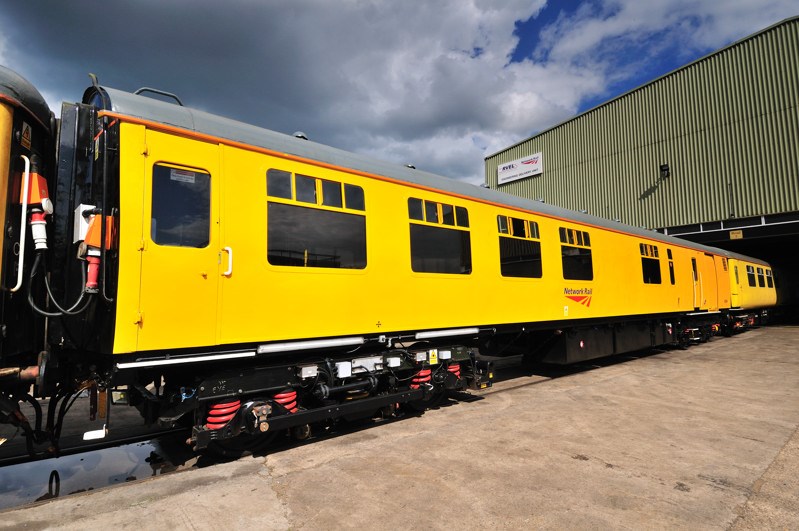Friday 6 Jul 2012
NETWORK RAIL LAUNCHES NEW ULTRASONIC TEST UNIT
- Region & Route:
- National
New test unit uses ground penetrating radar and ultrasonics to keep an electronic eye on the track
NEW ULTRASONIC TEST TRAIN ENTERS SERVICE
Network Rail has launched its fourth ultrasonic rail testing train into service, complete with ground penetrating radar, ultrasonics and rail profile laser scanner.
The company’s test trains use ultrasonic equipment – the same technology used in medical situations – to detect minute flaws in the track.
With the original three units being used at their full capacity to keep the track compliant, the addition of a fourth means one can be taken out of use for servicing, making the service more resilient and flexible.
Network Rail's director of engineering Steve Yianni said: “Network Rail’s number one priority is safety and the addition of this unit to our fleet means we can measure the safety and quality of our railway to much higher standards.
“It also means we can keep our test trains running more reliably and at more times across the country. With this we can improve the quality of the ride for all our passengers, and make sure they reach their destination in complete safety.”
The new train, or UTU 1 as it is known, has more accurate positioning systems and an improved ability to test the track. It can also be used at a higher speed, an important part of Network Rail’s plans for maintaining the network.
Most testing currently takes place at night at speeds of up to 30 mph. With further development and UTU-1, it is hoped to be able to test the track at 45mph.
The £700,000 UTU1’s systems can analyse many different aspects of the permanent way:
- Its two separate ground penetrating radar units can detect irregularities in the ballast and formation up to two metres deep, including voids;
- The ultrasonic test equipment on board can give early warning of any problems that could later occur with the track;
- The UTU’s rail profile scanner uses laser technology to compare the state of the railhead with a pre-programmed template to judge if the track is becoming worn out of shape, and in need of grinding.
The Network Rail UTU trains do not replace traditional track walks by permanent way staff – although they do reduce the need for them. Instead, they direct the focus of track walks to areas needing inspection, saving time and money, and increasing the safety of the network.
Contact information
Passengers / community members
Network Rail national helpline
03457 11 41 41
Latest travel advice
Please visit National Rail Enquiries
Journalists
Network Rail press office - National
020 3356 8700
mediarelations@networkrail.co.uk
About Network Rail
We own, operate and develop Britain's railway infrastructure; that's 20,000 miles of track, 30,000 bridges, tunnels and viaducts and the thousands of signals, level crossings and stations. We run 20 of the UK's largest stations while all the others, over 2,500, are run by the country's train operating companies.
Usually, there are almost five million journeys made in the UK and over 600 freight trains run on the network. People depend on Britain's railway for their daily commute, to visit friends and loved ones and to get them home safe every day. Our role is to deliver a safe and reliable railway, so we carefully manage and deliver thousands of projects every year that form part of the multi-billion pound Railway Upgrade Plan, to grow and expand the nation's railway network to respond to the tremendous growth and demand the railway has experienced - a doubling of passenger journeys over the past 20 years.
Follow us on Twitter: @networkrail
Visit our online newsroom: www.networkrailmediacentre.co.uk

